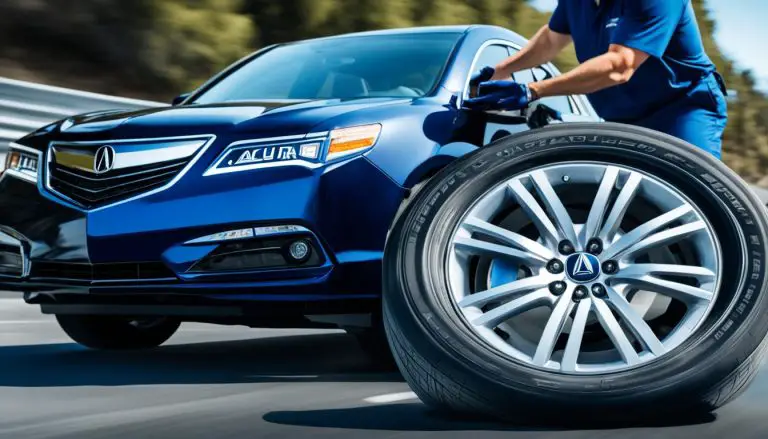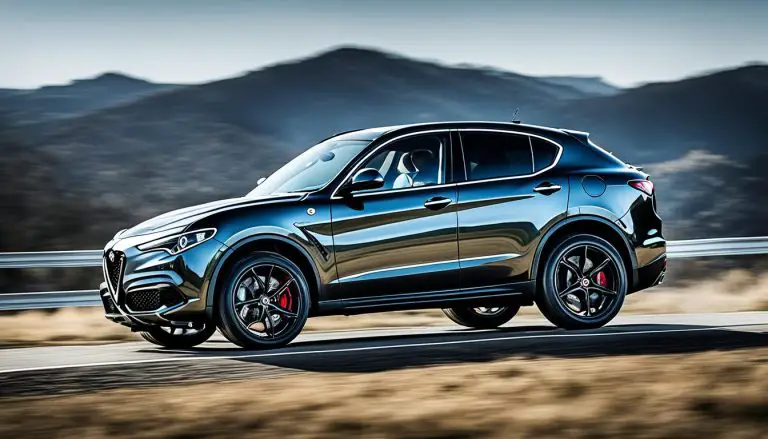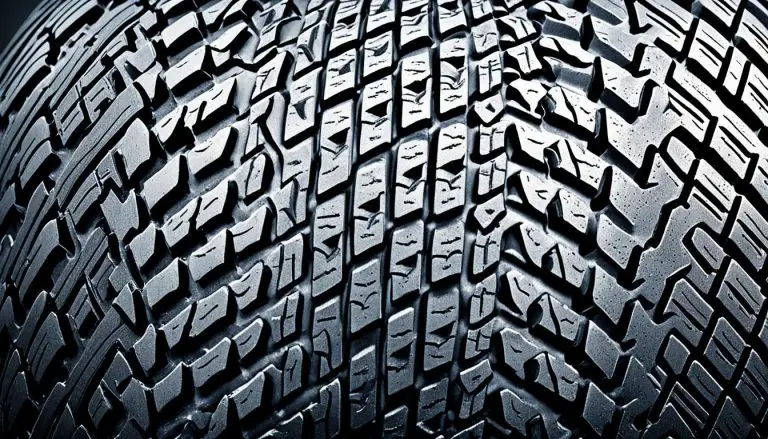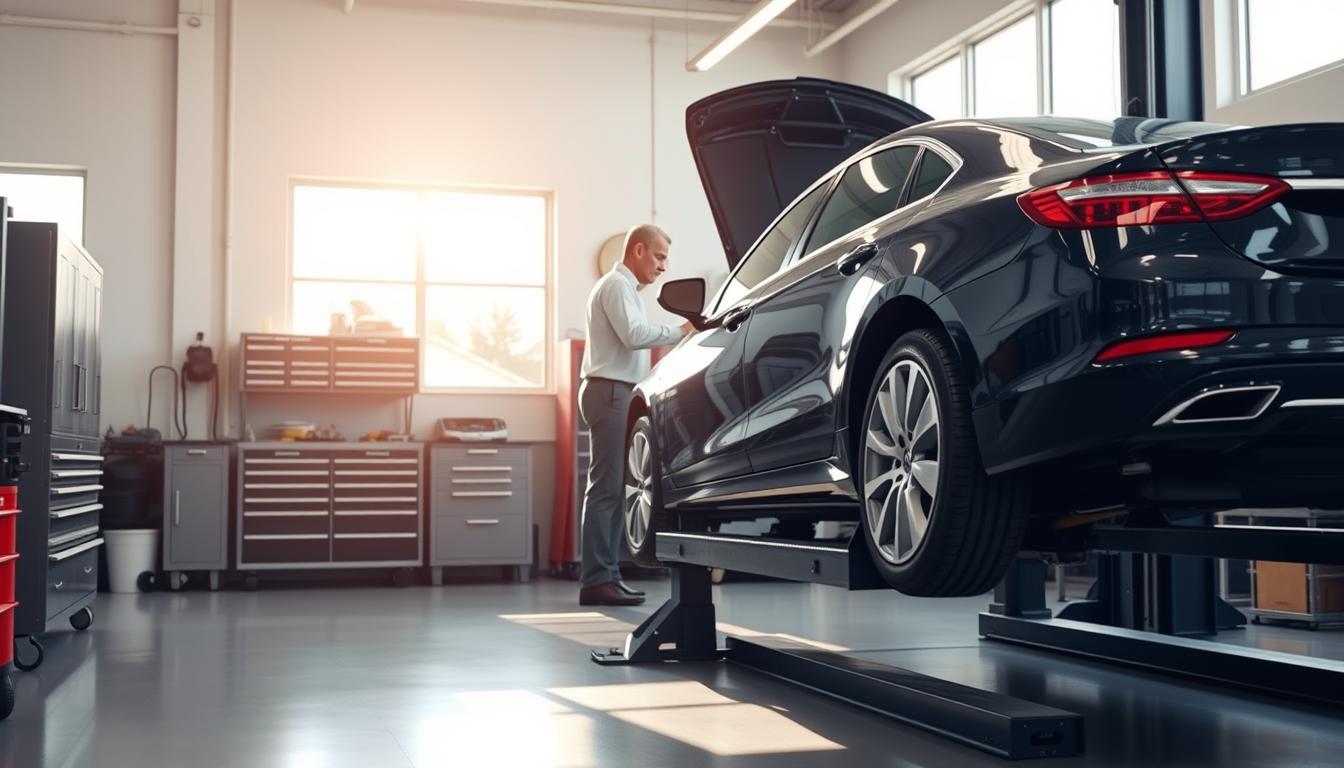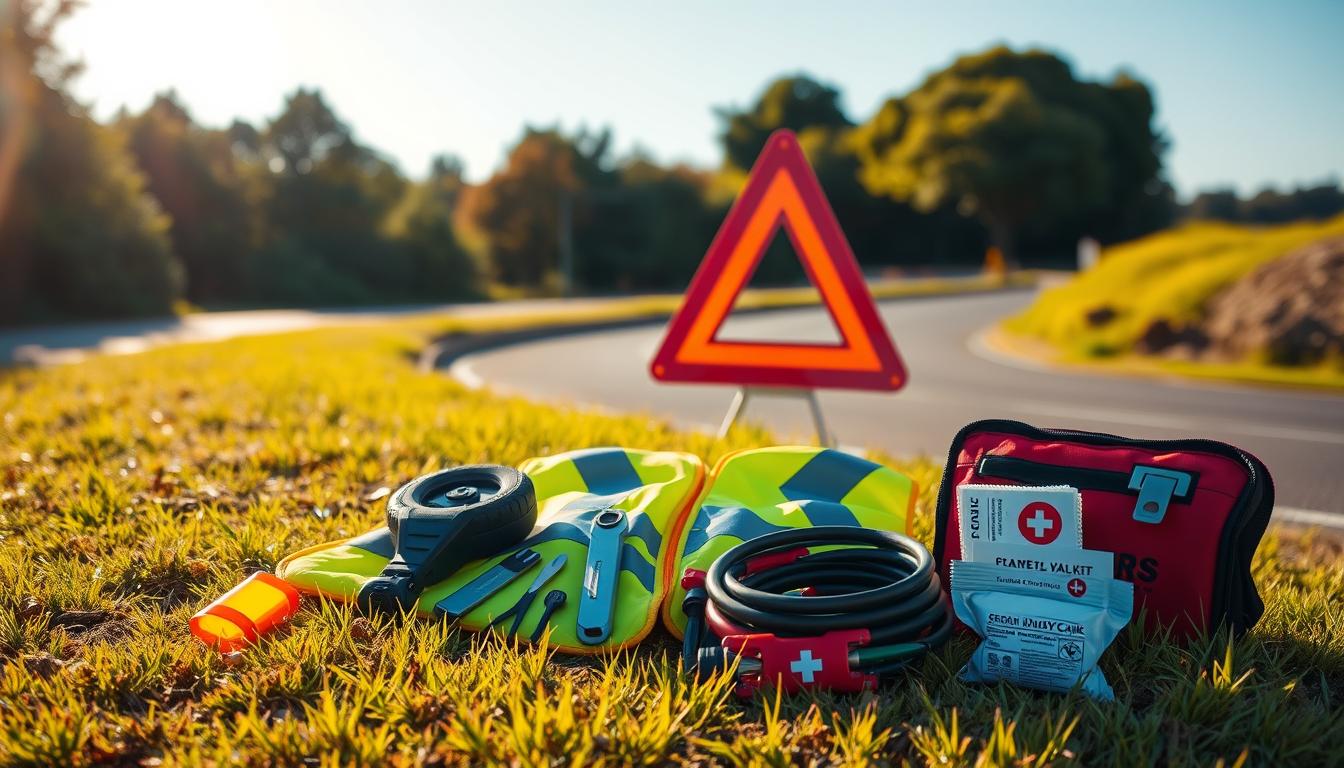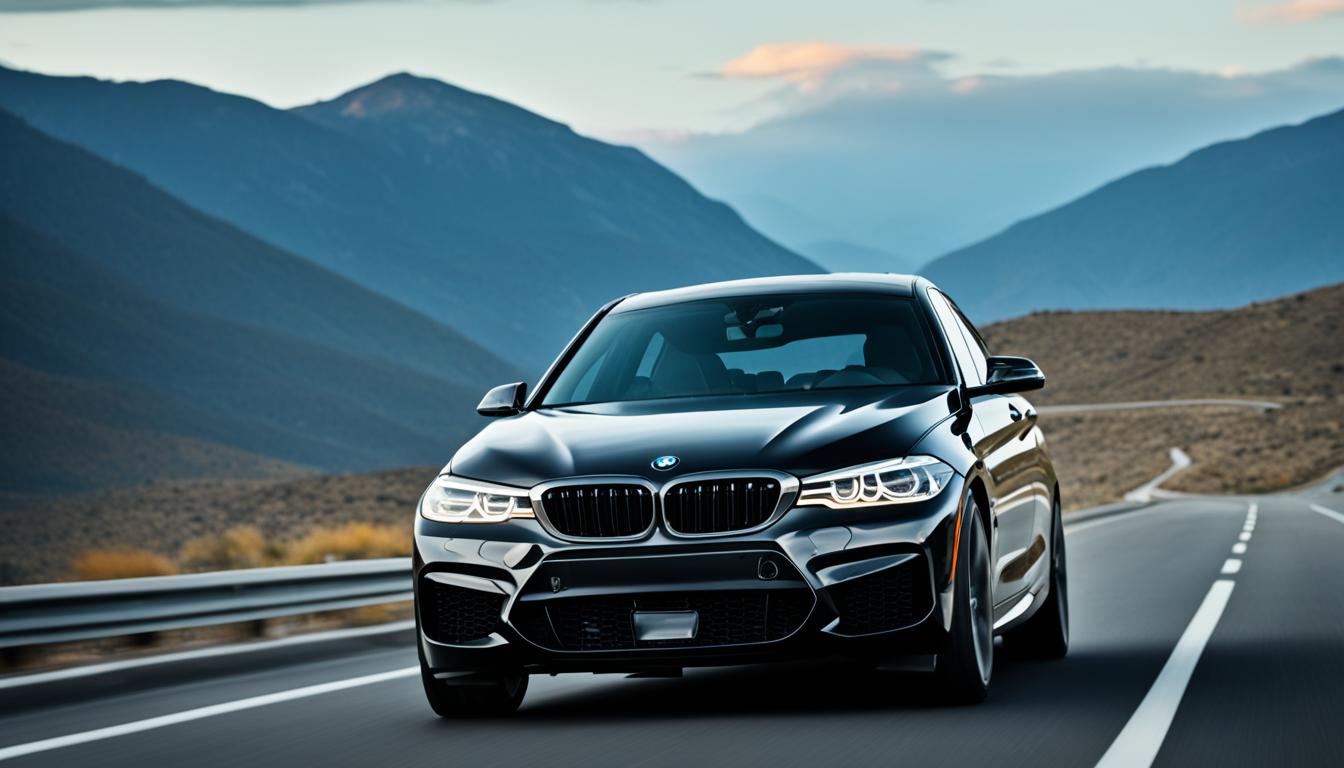
BMW’s run-flat tire technology has made a significant difference in the automotive world. It has allowed countless drivers to reach their destinations safely even after getting a puncture. This feature is a major advantage for BMW owners, providing a level of safety and convenience that’s hard to match.
In this guide, I will delve into the details of BMW run-flat tires. I will cover their advanced features, maintenance needs, and how they perform overall. This will help you understand everything you need to make an educated choice for your BMW.
What are BMW Run Flat Tires?
BMW run flat tires redefine the concept of a flat tire. This unique tire type can keep the vehicle moving despite losing air pressure. It’s all thanks to the special design with reinforced sidewalls. This allows for control and mobility even with a punctured or damaged tire. For BMW owners, it offers not just safety but also unmatched peace of mind whether on daily drives or long journeys.
Exploring the Advanced Technology
BMW’s run flat tire technology is known as the BMW Tire Mobility System for a reason. It features a self-supporting design bolstered by reinforced sidewalls. This design means the tire can keep its shape and function even after it’s punctured or blows out. Such a feature is not found in traditional pneumatic tires. Run-flat tires are standard on nearly every BMW in the U.S., except the BMW i and BMW M lines.
Benefits of Run Flat Tires
BMW’s run-flat tires revolutionize what a flat tire means for drivers. These tires offer tremendous safety benefits along with convenience and mental peace. They allow up to 50 miles of driving at speeds up to 50 mph post puncture. This means drivers can safely reach a service center without the urgency of changing a tire on the spot. It even removes the need to carry a spare tire, thus saving trunk space for other essentials. In addition, BMW notes these tires outperform spares in general stability, even at reduced pressures, offering further assurance to drivers
| Key Benefits of BMW Run Flat Tires | Details |
|---|---|
| Enhanced Safety | Ability to continue driving for up to 50 miles at speeds up to 50 mph after a puncture |
| Convenience | Eliminates the need to change a tire on the side of the road, freeing up trunk space |
| Stability | Offer more stability than spare tires even at low pressure levels |
In essence, BMW’s run flat tire technology sets a high bar for safety, convenience, and tire performance. Its impact on tire and vehicle design is profound. As the industry advances, watching how this innovation influences future developments will be fascinating.
How BMW Run Flat Tires Work
BMW’s run flat tires have a reinforced sidewall. This design supports the vehicle’s weight even when the tire loses all air. It enables drivers to travel a limited distance safely. This gives them time to reach a safe spot for tire replacement.
The inner lining is key to this technology. It helps the tire resist air loss and maintains control. Thus, drivers can manage until they address the problem safely.
At the core of the bmw flat tire solution is the bmw tire mobility system. This system is a breakthrough technology. It changes how drivers cope with sudden tire issues. With no spare tire needed, BMW’s run-flat tires ensure a smooth driving experience. This system lets BMW owners stay focused on their journey.
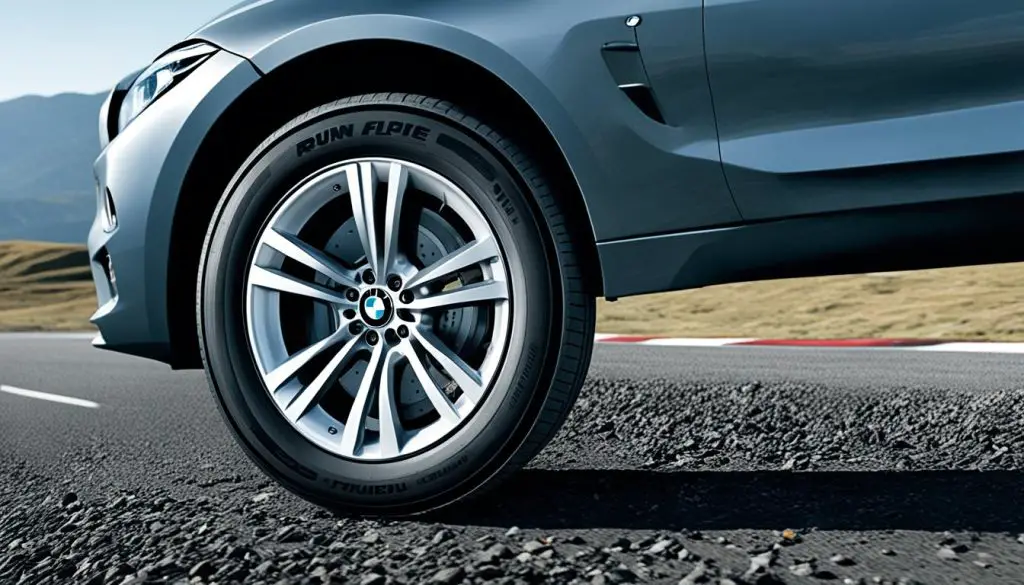
The sidewalls on BMW’s run flat tires are reinforced. They can take the vehicle’s weight, even with no air. This feature lets drivers keep going for about 50 miles at a lower speed when a tire goes flat. It makes driving safer and lets BMW owners handle surprises with ease.
Safety Features of BMW Run Flat Tires
BMW’s run-flat tires stand out due to their cutting-edge safety features, differentiating them from typical tires. These tires use a pioneering Tire Pressure Monitoring System (TPMS). This system continuously checks the air pressure in each tire. It then informs the driver about any concerning loss. Such real-time warnings enable drivers to address potential punctures or leaks promptly. This proactive approach mitigates the risk of sudden tire failure, ensuring better vehicle control.
In addition to the TPMS, BMW run-flat tires boast of robust sidewalls capable of bearing the car’s weight despite air pressure loss. BMW explains that their vehicles can travel up to 50 mph (80 km/h) for 100 miles (160 km) with a damaged run-flat tire. This offers a vital safety measure in case of tire blowouts. The tire’s robust construction aids the driver in maintaining steering control. It allows them to drive to the nearest repair shop or service center safely, reducing the potential for hazardous situations.
The marriage of TPMS and the reinforced tire structure highlights BMW’s commitment to bmw tire safety features. This system provides continuous monitoring of tire pressure and extends driving distance in case of tire punctures. Thus, BMW’s advanced tires contribute significantly to driver safety by ensuring readiness against unforeseen incidents.
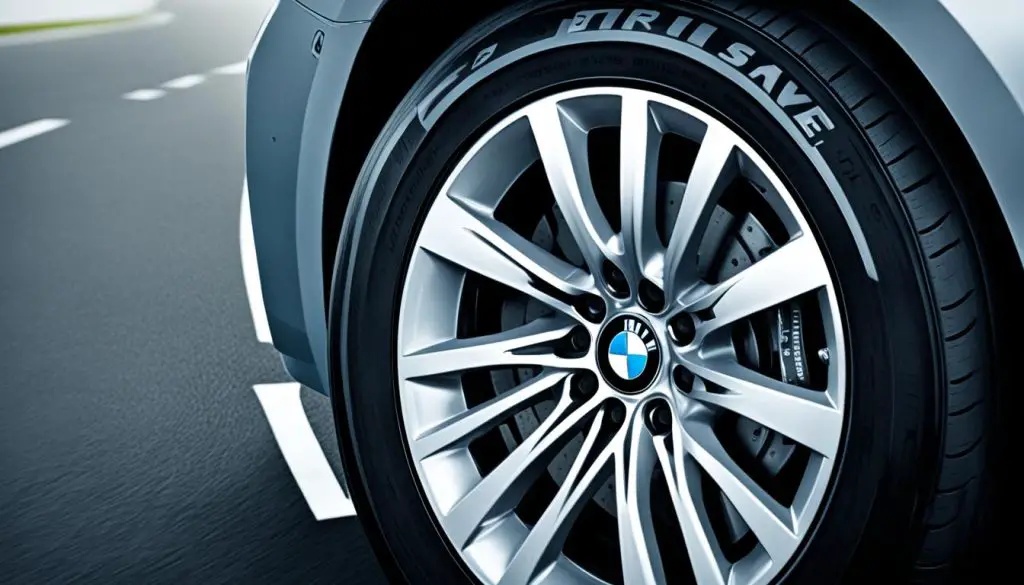
BMW Tires Run Flat Maintenance and Replacement
Maintaining and updating your bmw run-flat tire replacement is crucial for peak performance and safety. BMW drivers should check tire pressure with the bmw tire pressure monitoring system often. They need to watch for signs of wear or damage, like uneven tread wear or cracks in the sidewall.
Signs of Wear and Damage
Uneven tread wear is a major red flag for replacing your BMW run-flat tires. This issue could stem from improper inflation, misalignment, or everyday use. It’s also wise to look for sidewall cracks or bulges, which threaten the tire’s integrity.
Doing regular visual checks and keeping the right tire pressure can extend your BMW run-flat tires’ life. Proactive care and prompt issue resolution maintain your vehicle’s excellence in handling and performance.
Choosing the right replacements for your vehicle is key to preserving its safety and function. Only use authorized bmw run-flat tire replacement options. For the correct tire size and details, check your owner’s manual or ask a BMW expert.

Regular care and timely replacement of your BMW run-flat tires are not just for your car’s well-being. They are essential for ensuring your safety while driving. By adhering to the manufacturer’s advice, your BMW will keep offering the superb driving experience it’s praised for.
Performance of BMW Run Flat Tires
BMW is renowned for its dedication to engineering excellence, exhibited also in their run-flat tires. These tires are crafted to perform superbly, even under harsh conditions. The design includes reinforced sidewalls for improved handling and stability, leading to precise control and a comfortable ride.
This innovative construction method reduces the effect of road imperfections. As a result, BMW owners enjoy a smoother and more pleasurable driving experience.
Handling and Ride Quality
The outstanding trait of BMW run-flat tires is their exceptional handling. The fortified sidewalls ensure the tires remain stable and maintain their shape, even at the car’s extremes. This feature enhances cornering, responsiveness, and connection with the road for the driver.
Moreover, their design leverages advanced technology to absorb road irregularities. This means potholes, bumps, and other rough terrains are smoothly navigated, enhancing the ride quality significantly. BMW run-flat tires redefine comfort and refinement in driving.
BMW run-flat tires offer a blend of superior handling and ride comfort, making them ideal for drivers who seek excellence from their cars. They excel on challenging roads, as well as in city settings, providing the trust and performance BMW owners deeply value.
BMW Run Flat Tire Technology Evolution
BMW has embraced the challenge of evolving bmw runflat tire technology with enthusiasm and determination. This commitment has spurred constant innovation in tire solutions for its drivers. Over the years, this dedication has shaped the technological landscape of tires, enhancing both safety and performance for users.
The inception of bmw runflat tire technology was a pivotal moment in tire safety and functionality. By introducing tires with reinforced sidewalls, BMW enabled drivers to keep moving even with a puncture. This innovation significantly elevated driving safety and reliability. Subsequently, BMW’s tire technology evolved, with a focus on improving resilience, handling, and overall driving feel.
One significant development in bmw runflat tire technology was the adoption of cutting-edge materials and construction methods. Advanced polymers, fortified fabrics, and optimized treads allowed for the creation of lighter, more agile run-flat tires. These tires were engineered to handle the demanding conditions of daily driving with finesse.
| Year | BMW Run Flat Tire Technology Advancements |
|---|---|
| 2000 | Initial introduction of run-flat tires with reinforced sidewalls |
| 2005 | Improved design and construction for better handling and ride quality |
| 2010 | Incorporation of advanced materials like high-strength polymers for enhanced durability |
| 2015 | Optimization of tread patterns and sidewall structures for improved safety and performance |
| 2020 | Integration of intelligent tire pressure monitoring systems for real-time status updates |
BMW’s tire technology journey is far from over. Future advancements in bmw runflat tire technology promise even more remarkable breakthroughs. Safety, performance, and eco-friendliness remain central to the brand’s tire innovation goals. This ongoing commitment ensures drivers will always enjoy access to cutting-edge tire solutions.
Pros and Cons of BMW Run Flat Tires
If you drive a BMW, you’ve likely heard of the benefits run-flat tires bring. These special bmw tires run flat ramp up safety and make your life easier. But, they do have a few drawbacks. Exploring the good and bad of BMW run-flats can guide your choice wisely.
The biggest pro is safety. Their tough sidewalls let you keep going after a flat. This means you can safely make it to help, crucial on long trips or remote spots.
Convenience ranks high as well. No more changing tires on the roadside. You keep moving till it’s time to fix or swap the tire, sparing you from lost time and stress. Busy city drivers and those without tire tools really benefit.
On the flip side, some find the ride of bmw tires run flat not as smooth as regular ones. The stiff sidewalls for safety can make the journey bumpier, especially on rough paths.
They’re also pricier to renew than usual tires. This might hit your wallet hard, particularly for a full set change.
| Pros | Cons |
|---|---|
| Enhanced safety in the event of a puncture or blowout | Potentially harsher ride quality |
| Convenience of continued driving without a flat tire | Higher replacement costs |
Considering BMW run-flat tires means looking at your driving style, typical routes, and your budget too. This approach helps you choose what best fits your BMW needs. By knowing the upsides and downsides, you’ll steer your decision in the right direction.
Choosing the Right Run Flat Tires for Your BMW
Choosing the right bmw run-flat tire replacement is key for your BMW’s performance and safety. BMW’s guidelines for tire sizes and types must be followed. This guarantees a perfect fit and the best car performance.
Consider your BMW’s make and model when selecting bmw tire size and specifications. Each model may need a specific tire size for the best handling and comfort. To make the right choice, it’s wise to speak with a BMW-certified expert.
Make sure the run flat tires are compatible with your BMW’s TPMS. This system is crucial for spotting tire pressure changes, keeping you safe. It helps avoid risky situations while driving.
Researching and finding the right bmw run-flat tire replacement enhances your safety and car’s performance. Always seek advice from a BMW-certified technician to ensure you’re choosing wisely for your vehicle.
Alternatives to BMW Run Flat Tires
BMW’s run-flat tires excel in resisting punctures and sustaining mobility. Nevertheless, in certain situations, drivers might find other tire choices more suitable. For instance, traditional pneumatic tires offer a smoother and more comfortable ride. These, however, do not match the puncture resistance and self-supported capabilities of BMW’s run-flat tires.
In some cases, drivers might prefer using traditional tires coupled with a repair kit. This approach can help fix minor punctures and save money by not needing to replace the whole tire. Without a doubt, it falls short in providing the same sudden loss of pressure protection as run-flat tires do.
| Tire Type | Puncture Resistance | Ride Quality | Cost |
|---|---|---|---|
| Run-Flat Tires | High | Moderate | Higher |
| Pneumatic Tires | Low | High | Lower |
| Pneumatic Tires + Repair Kit | Moderate | High | Moderate |
Choosing between run-flat tires from BMW and other alternatives hinges on individual driving habits, needs, and values. It’s crucial for BMW drivers to assess different options. They should select tires that strike the best compromise between performance, safety, and cost for their particular situation.
Conclusion
BMW’s innovation with run-flat tires revolutionizes the driving experience for its users. These tires are packed with advanced safety measures, like tire pressure monitoring and tough sidewalls. They also excel in performance, offering outstanding handling and ride comfort.
This tire technology journey highlights BMW’s dedication to improve its offerings and delight drivers. BMW’s run-flat tires are a trusted, easy solution for punctures or when you want to elevate your commute. They focus on safety and efficiency, making them an excellent choice for BMW owners.
For BMW drivers, adopting run-flat tires is an evident choice. They ensure unmatched freedom on the road, enriched handling, and top-notch safety. These tires are essential for unlocking your BMW’s full potential. BMW’s run-flat tires are the trailblazers in the tire industry, shaping the future of mobility and performance.

